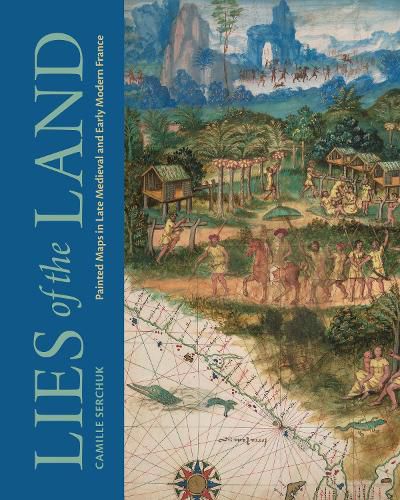Readings Newsletter
Become a Readings Member to make your shopping experience even easier.
Sign in or sign up for free!
You’re not far away from qualifying for FREE standard shipping within Australia
You’ve qualified for FREE standard shipping within Australia
The cart is loading…






Lies of the Land examines the often-overlooked artistic roots of mapmaking practice in early modern France, offering an original perspective on discourses of accuracy and their relationship to the pictorial origins of modern mapmaking.
Until the seventeenth century, most mapmakers in France were painters. Schooled in techniques of drawing and perspective-and in the careful study of nature that we associate with early modernity-they also learned the more expressive and imaginative Mannerist forms that dominated French painting in this period. Their maps draw on conventions of both painting and mapmaking to create beautiful, informative, and persuasive images for a wide variety of contexts and purposes. In this book, Camille Serchuk explores the strategies these cartographers deployed to weave together accuracy, ornament, and artifice in maps at all scales. Looking beyond the techniques of measurement and perspective, Serchuk shows how painterly interventions framed and manipulated the appearance and reception of cartographic objects.
Lies of the Land is an important new assessment of the character and status of early modern cartography that challenges binary distinctions between art and science and between decorative and epistemic images. It will appeal especially to art historians and historians of sixteenth-century France as well as scholars of map history.
$9.00 standard shipping within Australia
FREE standard shipping within Australia for orders over $100.00
Express & International shipping calculated at checkout
Lies of the Land examines the often-overlooked artistic roots of mapmaking practice in early modern France, offering an original perspective on discourses of accuracy and their relationship to the pictorial origins of modern mapmaking.
Until the seventeenth century, most mapmakers in France were painters. Schooled in techniques of drawing and perspective-and in the careful study of nature that we associate with early modernity-they also learned the more expressive and imaginative Mannerist forms that dominated French painting in this period. Their maps draw on conventions of both painting and mapmaking to create beautiful, informative, and persuasive images for a wide variety of contexts and purposes. In this book, Camille Serchuk explores the strategies these cartographers deployed to weave together accuracy, ornament, and artifice in maps at all scales. Looking beyond the techniques of measurement and perspective, Serchuk shows how painterly interventions framed and manipulated the appearance and reception of cartographic objects.
Lies of the Land is an important new assessment of the character and status of early modern cartography that challenges binary distinctions between art and science and between decorative and epistemic images. It will appeal especially to art historians and historians of sixteenth-century France as well as scholars of map history.